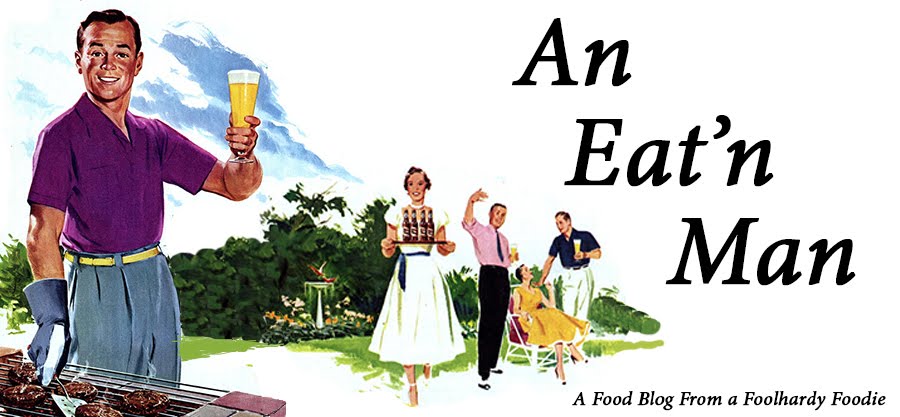
I’m a little sad this month, even though October is my
favorite month of the year. Yes, I love
the fall, and there’s no better place to embrace all that is autumn than that
Foliage Fantasy Land: New England. For
years me and the wife made a point of pilgrimaging to that region--Maine, in
particular, during the height of fall foliage colors in October. But it wasn’t just the pretty colors that
compelled us, fall is New England is just magical all around. But, for various reasons, we’ve missed making
that trip the last few Octobers, including this one. Thus I am sad. Fall in Texas is little more than a browning
of the leaves, and it lacks that quaint, travel-back-in-time New England
charm.
So, what to do?
Well, if I can’t be in New England, perhaps I can bring a bit of it to
me, in the form of some delicious New England Style Clam Chowder.
This is a thick, creamy, delicious dish that I always
make a point to get a few bowls of when we visit Maine. I
first had this wonderful chowder (or chowdah, as they call it in Maine) at the
Jameson Tavern in Freeport, Maine, and that’s the version I’ve tried to emulate
in the recipe below.
They wouldn’t budge
on their recipe, but I gained a bit of inspiration from one of my old Culinary
Arts Institute cookbooks from the 1950s.
I tweaked the recipe just a bit and came up with the one below. It was pretty close. Give it a try, it just might make your autumn
a little more bright and cheery.
New England Clam Chowder
4 strips bacon, cut into matchsticks
2 tablespoons butter
1 large yellow onion, diced
2 celery stalks, diced
½ cup leeks, minced, white part only
¼ cup green onions, minced
3 tablespoons all purpose flour
2 cups clam juice
4 cups chicken broth
2 6.5 oz cans chopped clams, liquid reserved
3 cup heavy cream
1 cup milk
2 bay leaves
½ teaspoon thyme
1 to 1.5 pounds russet potatoes, peeled and cubed
Dash of Worcestershire
Dash of Tabasco
Salt and freshly cracked pepper to taste
Oyster crackers
2 tablespoons butter
1 large yellow onion, diced
2 celery stalks, diced
½ cup leeks, minced, white part only
¼ cup green onions, minced
3 tablespoons all purpose flour
2 cups clam juice
4 cups chicken broth
2 6.5 oz cans chopped clams, liquid reserved
3 cup heavy cream
1 cup milk
2 bay leaves
½ teaspoon thyme
1 to 1.5 pounds russet potatoes, peeled and cubed
Dash of Worcestershire
Dash of Tabasco
Salt and freshly cracked pepper to taste
Oyster crackers
Cut the bacon into matchsticks and fry until crispy.
While bacon is cooking, mince your onion,
celery, leeks and green onions.
When
bacon is crispy, remove bacon and reserve.
Add butter to pan.
Once melted,
sauté onion and celery until soft and translucent.
Add green onions and leeks and sauté a few
minutes longer. Sift in flour...
...and cook
over low heat, stirring, for two to three minutes. Whisk in the clam juice, reserved clam liquid
and chicken broth. Let simmer for 10
minutes.
Meanwhile, scald the heavy cream and milk in a double
boiler.
This will not only bring it to temperature,
so that it won’t curdle when you add it to the hot broth, but it caramelizes
the milk sugars a bit, heightening the flavor of the chowder. While this heats, dice your potatoes.
When the cream has simmered for about 5
minutes, (but not boiled) add it, along with the potatoes, bay leaves, thyme,
Worcestershire and Tabasco to the soup base and allow to simmer 20 to 30
minutes, until soup has thickened slightly and potatoes are tender.
Add clams at the very end and cook an
additional five minutes.
Serve immediately with some parsley, the reserved bacon
bits, and the oyster crackers.
Until next time, Fall in love with Autumn, and this wonderful clam chowdah!
Chris





























